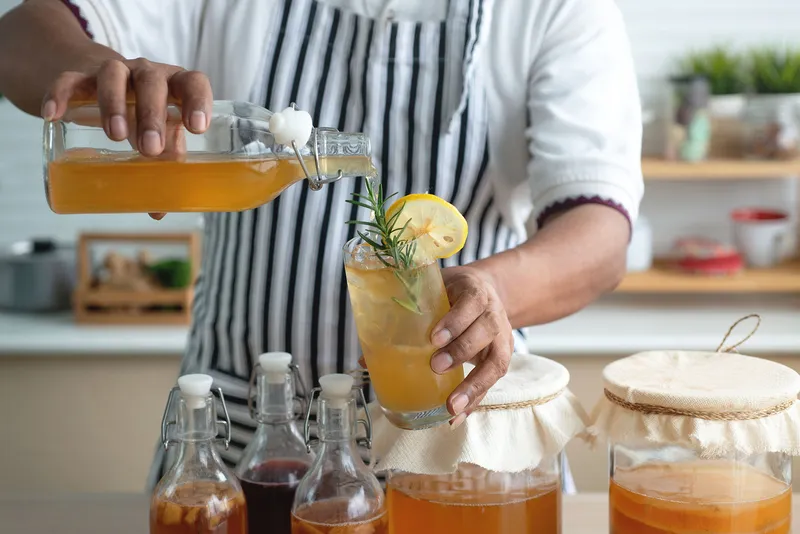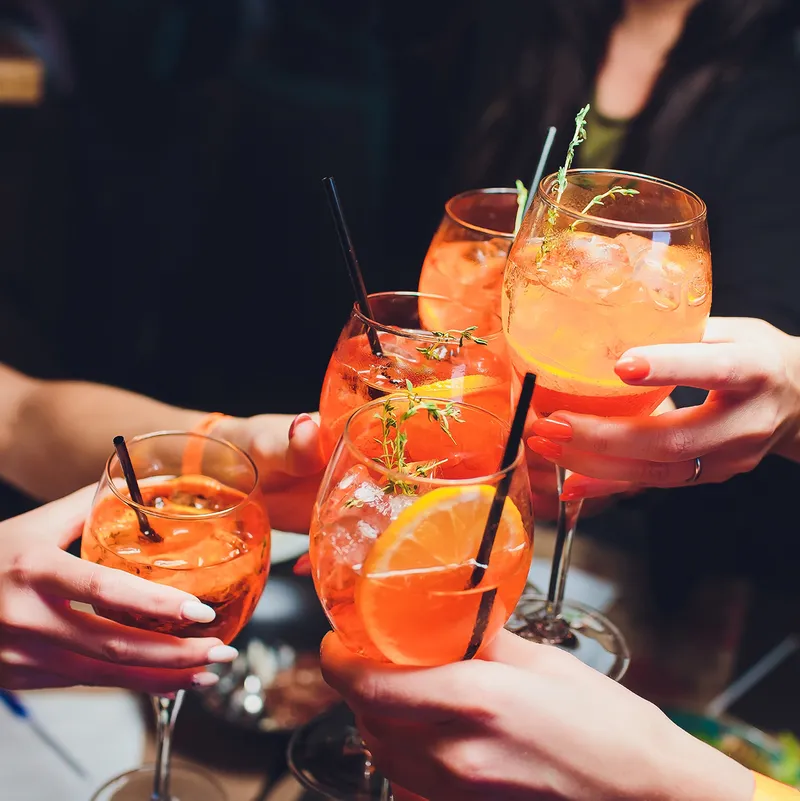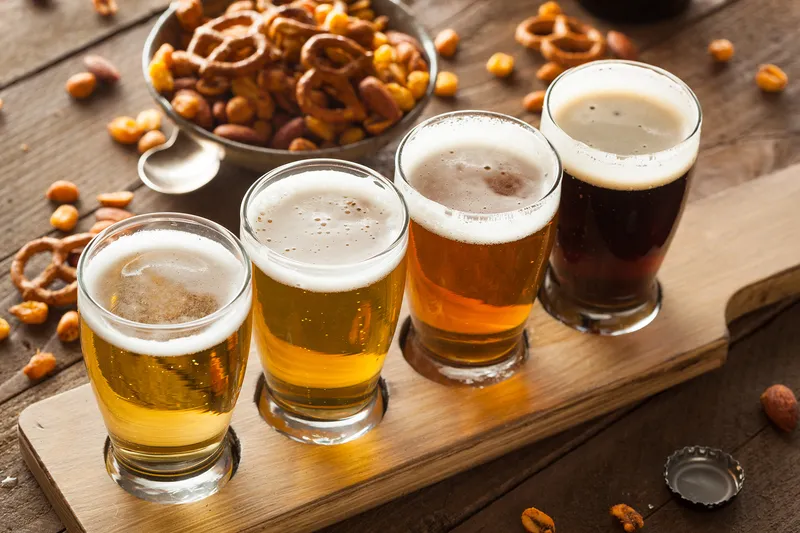The rise of low-ABV and sessionable drinks
Low alcohol-by-volume and sessionable drinks have emerged as new ways to keep it chill without the harsh consequences of overindulgence.
Historically, alcohol consumption has been deeply intertwined with social rituals, celebrations, and relaxation. However, the traditional narrative of drinking—often associated with high-alcohol spirits, heavy beers, and binge drinking—is being rewritten. Today’s consumers, particularly millennials and Gen Z, are prioritising balance, moderation, and quality over quantity.
In recent years, the beverage industry has witnessed a seismic shift in consumer preference, driven by the growing demand for healthier and more mindful drinking options. At the forefront of this movement are low alcohol by volume (low-ABV) and sessionable drinks which have emerged as new ways to ‘keep it chill’ without the harsh consequences of overindulgence.
And it is safe to say that this is not just a passing trend but a reflection of evolving lifestyles choices, health-conscious drinking habits, and a growing appreciation for balanced indulgence.
According to a report by IWSR, the low and no alcohol beverage market globally had grown by 7% in volume in 2022, outpacing the traditional alcoholic beverage market. In India, the segment is expected to grow at a CAGR of over 20% from 2023 to 2027, driven by urban millennials and Gen Z consumers who are prioritising moderation, and further fuelled by rising disposable incomes.
Understanding the trend
Low-ABV drinks are typically defined as alcoholic beverages with an alcohol content below 0.5% and maximum up to 3% by volume. This makes it significantly lighter than traditional beers, wines or spirits.
Sessionable drinks, on the other hand, are beverages designed to be consumed over an extended period without overwhelming the drinker. These drinks often have alcohol content ranging from 3% to 5% and are characterised by their refreshing, easy-to-drink qualities. These categories typically include beers, spritzers and cocktails, but the shift in consumer behaviour has also driven innovation in traditional categories such as hard seltzer, kombuchas and botanical infused spirits.

Image source: Shutterstock
The appeal of these beverages lies in their ability to offer the social and sensory pleasures of drinking without the negative side effects of high alcohol consumption. They allow consumers to enjoy multiple drinks in a single sitting while maintaining clarity and control, a concept that resonates deeply with today’s health conscious audience.
The force behind
The growing preference for low-ABV and sessionable drinks is rooted in deeper shifts in consumer behaviour.
Several factors have contributed to this change:
Health and wellness
The global wellness movement has profoundly influenced consumer behaviour with people increasingly seeking products that align with their health goals.
Alcohol is largely scrutinised for its impact on physical and mental well-being. In such scenarios, low-ABV and sessionable drinks offer a compromise, allowing consumers to participate in social drinking without compromising their health.
Low-ABV drinks often contain fewer calories and less sugar than traditional cocktails, making them a preferred choice for those looking to maintain a healthier lifestyle.
Mindful drinking
Mindful drinking has gained traction globally, especially among young consumers. A Nielsen study found that 66% of millennials in the United States are actively trying to reduce alcohol consumption. This shift is actively mirrored in India, where urban professionals are drinking more consciously, seeking experience over excess.
Many now view drinking as a complement to social interaction rather than its focal point. This moderation movement is particularly evident in social settings.
Consumers now prioritise quality over quantity, opting for beverages that allow them to enjoy the social aspect of drinking without the unwanted after-effects of high alcohol consumption.
The influence of global drinking culture
Western markets, particularly in Europe and North America, have long embraced sessionable drinking. The ‘aperitivo’ culture in Italy and the growing popularity of spritzers in the US are influencing global drinking patterns.

Image source: Shutterstock
This shift is being embraced in India as well, where younger consumers are experimenting with diverse beverage formats that prioritise taste and experience over high alcohol content.
Changing social norms
The rise of low-ABV and sessionable drinks also reflects changing social norms around alcohol consumption. In many cultures, there is a growing acceptance of sobriety and moderation, driven in part by the popularity of movements like Dry January and Sober October.
These initiatives have not only raised awareness about the benefits of reducing alcohol intake but have also normalised the idea of choosing low-alcohol or alcohol-free options in social settings. As a result, low-ABV drinks are no longer seen as a compromise but as a legitimate and desirable choice.
Economic impact, market response, and innovation
The growing demand for low-ABV and sessionable drinks has significant implications for the beverage industry. Producers, retailers and hospitality businesses are adapting to this shift by expanding their offerings and rethinking their market strategies.
This trend represents both a challenge and an opportunity, as traditionally high-alcohol products still dominate the market. However, the rise of low-ABV drinks has opened up new revenue streams and customer segments.
Restaurants and bars are also capitalising on the trend by curating low-ABV menus and promoting sessionable options. This not only caters to the preferences of health-conscious consumers but also enhances the overall drinking experience by encouraging moderation and exploration.
With this shift in mind, brands and mixologists are responding with a wave of innovative products and offerings.
Craft beer and light lagers
The craft beer movement has been instrumental in redefining sessionable drinking. Breweries are crafting lighter, flavorful lagers, and IPAs (India Pale Ale) with ABVs as low as 3%, catering to consumers who enjoy beer without the heavy buzz.
India’s craft beer market, which was valued at approximately $180 million in 2022, is seeing an influx of sessionable options that resonate with a younger audience. Brands are focusing on tropical, citrusy flavors and lower carbonation to enhance drinkability.

Image source: Shutterstock
Hard seltzer and low-ABV cocktails
The hard seltzer boom in the US. which saw the category grow by 130% between 2019 and 2021, has influenced similar trends in other markets.
In India, hard seltzer and low-ABV ready-to-drink beverages are gaining ground, particularly among female consumers who prefer lighter, fruity beverages. These are typically crafted using botanical spirits, fortified wines, and fresh ingredients, making mindful drinking a refined experience.
Fermented and functional beverages
Kombucha, kefir, and other fermented drinks with natural probiotics are making their way into the mainstream as alternatives to traditional alcohol. These beverages, often containing trace amounts of alcohol (below 0.5% ABV), appeal to health-conscious drinkers seeking gut-friendly options.
Functional beverages infused with adaptogens, CBD, and nootropics are also emerging as competitors to alcoholic drinks, providing relaxation and mood-enhancing effects without intoxication.
The road ahead
As the low-ABV and sessionable drinks trend gains momentum, its evolution will be shaped by changing consumer preferences, technological advancements, and broader socio-economic shifts.
Personalisation is set to play a key role, with consumers seeking beverages tailored to their unique tastes, dietary needs, and even genetic profiles. Sustainability will also drive innovation, as demand grows for drinks made from organic, locally sourced, or upcycled ingredients that align with eco-conscious values. Additionally, the lines between beverage categories are blurring, with hybrid products like hard seltzers, wine spritzers, and non-alcoholic cocktails gaining traction.
The rise of low-ABV and sessionable drinks reflects a fundamental shift in how we view alcohol—no longer as a means of intoxication but as a way to enhance social experiences, savour flavours, and enjoy moderation. With millennials and Gen Z leading the charge, and factors like rising disposable incomes, growing female consumption, and rural market expansion fuelling demand, this trend is poised for sustained growth.
For producers and retailers, it represents an opportunity to innovate, connect with diverse audiences, and redefine the role of alcohol in a world where balance and mindfulness are increasingly valued.
Low-ABV and sessionable drinks are not just a trend; they are a testament to a new way of living, socialising, and ‘keeping it chill.’
The author is CEO, Mount Everest Breweries Ltd.
Edited by Swetha Kannan
(Disclaimer: The views and opinions expressed in this article are those of the author and do not necessarily reflect the views of YourStory.)







